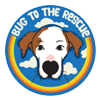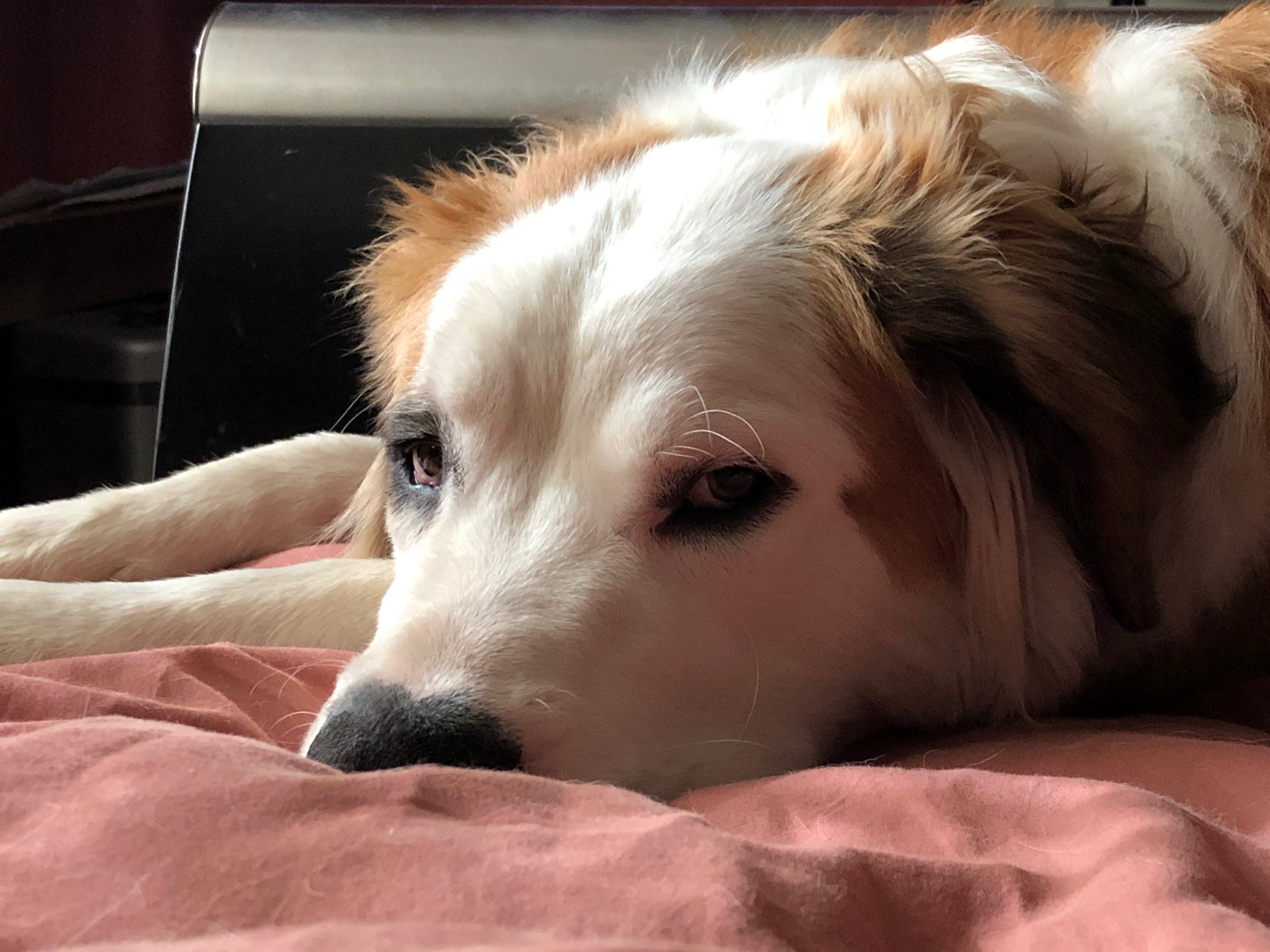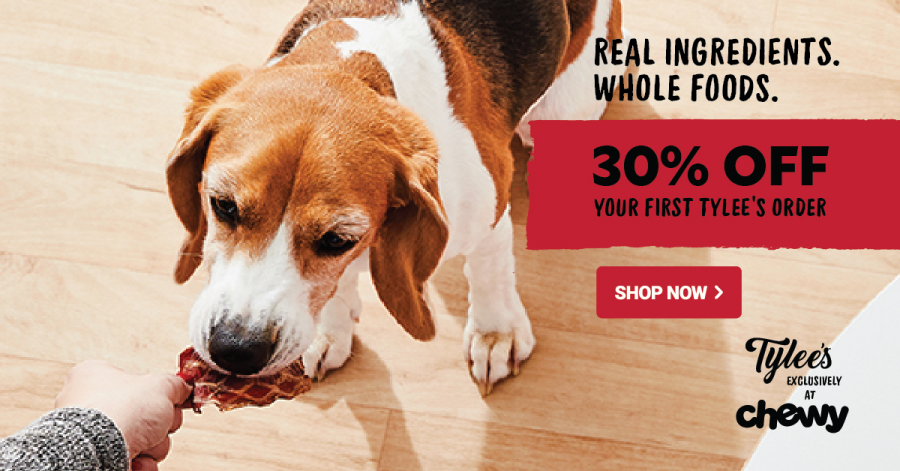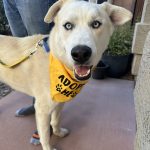Bringing a New Dog Into Your Home
So you want to rescue a dog, but you already have one at home… No Worries! We got this!
First off, if at all possible, it’s best to bring your dog with you to the shelter or rescue so a proper introduction can be done there. This is a good starting place and many places will require it. This will give you a general idea of how they might behave together. But, just because they might appear to be best friends at the shelter, that CAN change when you bring them home. After all, your current pup considers it their home, and welcoming another dog in is very different than meeting for a playdate at the local park.

Most shelters or rescues should handle the first introduction to make sure it’s done correctly. After that, you’ll be on your own, so we’ve put together some guidelines to help ensure a successful intro at home.
Always make sure that if you decide to adopt, do NOT bring both dogs home together in the same car, even if they got along great at their meeting. The last thing you want is any kind of a scuffle while you’re driving. Either have someone else with a car there with you, or you’ll first have to bring your dog home and come back for your new rescue.
When you arrive back home, have someone bring your dog to a neutral area like a park or down the street. The less distractions the better.
- Make sure that each dog is on a leash and has someone capable of handling the dog. Keep the dogs on their leashes by your side and look at their body language.
- If both dogs appear happy to see each other, wait until they settle down a bit. Then let the calmer dog approach the other slowly. A good way to get both dogs to relax is to take them on a walk together where you each walk side by side but far enough away from each other so that the dogs aren’t interacting with each other. Take your time doing this. If they still seem too excited, just wait a little longer for them to calm down. Expect this to step to take 5-10 minutes although more time isn’t unusual.
- It’s booty time! Dogs say hello to each other by sniffing the others butt. You’ll need to pay close attention. If one dog growls, bares their teeth, stares intently (fixates) or tries to put their head above the other dog’s shoulders, say “NO” very firmly and get the agitated dog’s attention again. Calmly separate the pair for a minute and then try again.
- If you don’t see any of the warning signs, then allow the dogs to act naturally, but monitor their interactions. It’s best to hold the leashes up high so that the dogs can circle each other without getting tangled up in the leashes. If they begin to play, or your dog walks back towards you without really caring about the new dog, you have a “go” from your family dog! Good Job!
- If you’re in an enclosed area, you can drop the leashes and monitor everything. If all goes well, you can take the leashes off at that point and let them run around together. For this part, it’s best if you watch and pay attention to the intro when they do it at the shelter. This way you can repeat the steps on your own once you get home.

Once the dogs seem comfortable with each other, it’s time to move on to the next phase: bringing them into the house. If they still seem to be getting along together, you can drop the leashes but make sure to leave them on just incase you need to intervene. Closely monitor all the dogs’ interactions for the next 24 hours.
For the first 3 days, it’s best to set up an area just for your new dog where he can decompress. After all, life at the shelter can be stressful, so he or she will need some time to relax and adjust. It’s a good idea to take the dogs on walks together during this time. It’s a BAD idea to just leave them together unsupervised when you go out.

Remember, you need to watch each and every interaction and playtime your dogs have together. The goal is to stop any bad behavior before it escalates to dominance or even a fight. Here are some recommendations and tips to use so that both your pooches will be successful during their transition period. It’s best to be overly cautious at this stage, as the more precautions you take, the more likely it is that they’ll be well integrated.
- When you must leave the dogs alone, it’s best to have them separated, either by putting them in separate areas, using crates, or a gate to divide them. This should ward off any altercations during the period where they are getting to know one another.
- It’s Suppertime! Avoid free-feeding, as this can be a particularly sensitive trigger for some dogs. You don’t want to have an altercation over food, as that’s very avoidable. Feed your dogs twice a day, and at least for the first few days, make sure they are separated in crates or different rooms to start. Once you feel they are really getting along well, you can try feeding them in different corners of a room. It’s best to stand in the middle and prevent either from entering the others space while eating.
- The same holds true for treats and toys. Especially when it comes to “high-value” items like rawhide, bully sticks or marrow bones. Start out by separating your dogs for treat time. Once the dogs are more comfortable and trust you, and you trust them, then begin monitoring treat time when the dogs are in the same room together. NEVER leave these items unattended. For most dogs, this is a fight waiting to happen. So whenever you give them a treat, make sure you know exactly where it goes and that you collect the left overs and put them away safely. We’re very aware of fights that break out over someone accidentally leaving a bone out on the living room floor.
- Toys can also have the same effect with some dogs, so make sure that they both have enough toys to keep that happy. During the few weeks, monitor all toy play, especially if it’s a rope toy or something that can result in a tug of war or toys with squeakers in them. Many dogs with a high prey drive can become possessive of them.
- Monitor their play time and study their body language. Be on the lookout for any of the typical cues, many of which are VERY subtle. These include lip curls, ears back, hackles raised, tail held high, stiff body, or staring at the other dog. If you see any of these, it’s important to correct the dog and tell it to go lay down and wait until you feel it’s mentally relaxed. You can tell by the change in body language. If the second dog did something that warranted the warnings from the first dog, be sure to give that dog the correction.
- In general, most of the time play will be self-regulated when it’s between a male and a female dog (think if the boy tries to hump and the girl growls to make him stop). However, it is important to step in when one dog is not responding to the corrections of the other.
- Remember that many dogs can be vocal during playtime. It’s easy for some people to think that because a dog is growling, it’s vicious and is going to attack. Basically, a growl needs to be taken in context. Was it during a “play bow”? Did the other dog growl back? As long as the intensity of the play did not escalate, rest assured that the dog is just being “vocal” during playtime. Think of it like when you go to the gym. Some people lift their weights with little fanfare. Then you have the guy that grunts, nearly screaming every time he lifts the weights. That’s being “vocal” too!
- Dogs are like kids, so make sure that you give each dog individual attention. After all, if you have children, you wouldn’t give more attention to one than the others, would you? Be conscious of your original dogs feelings. You don’t want it to feel like this new dog is taking away all the attention. It’s best to achieve this during walks and training sessions, or just taking one of the dogs with you to Home Depot or the Pet Store.

Your new family member is going to require you to have patience. Many dogs take time to adjust to their new home and family before becoming completely comfortable in their new environment. That all being said, with time, love, effort and most importantly, patience, your new pup should adjust to their new forever home.
For more information on bringing a new dog into your home, check out our FAQ here!





